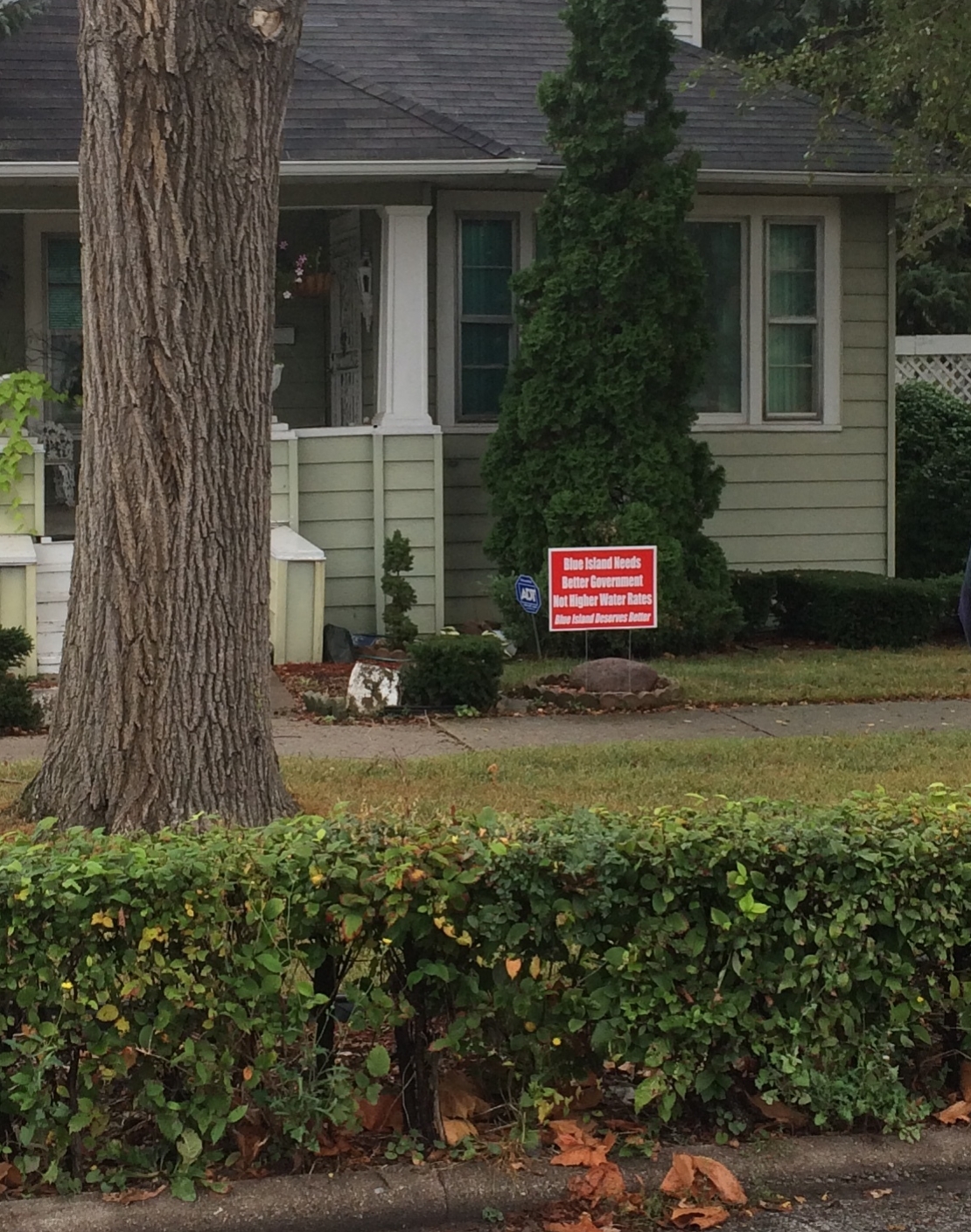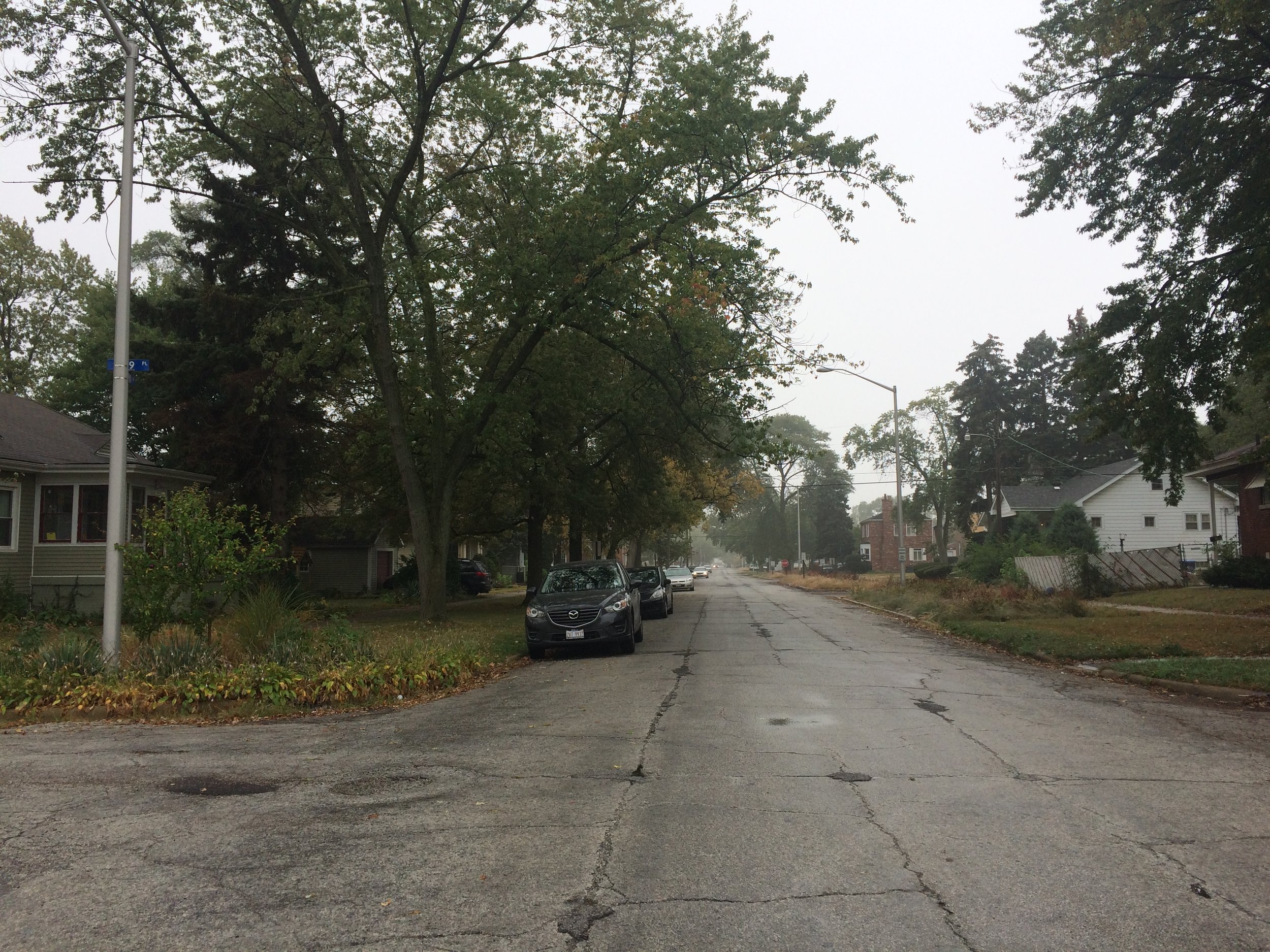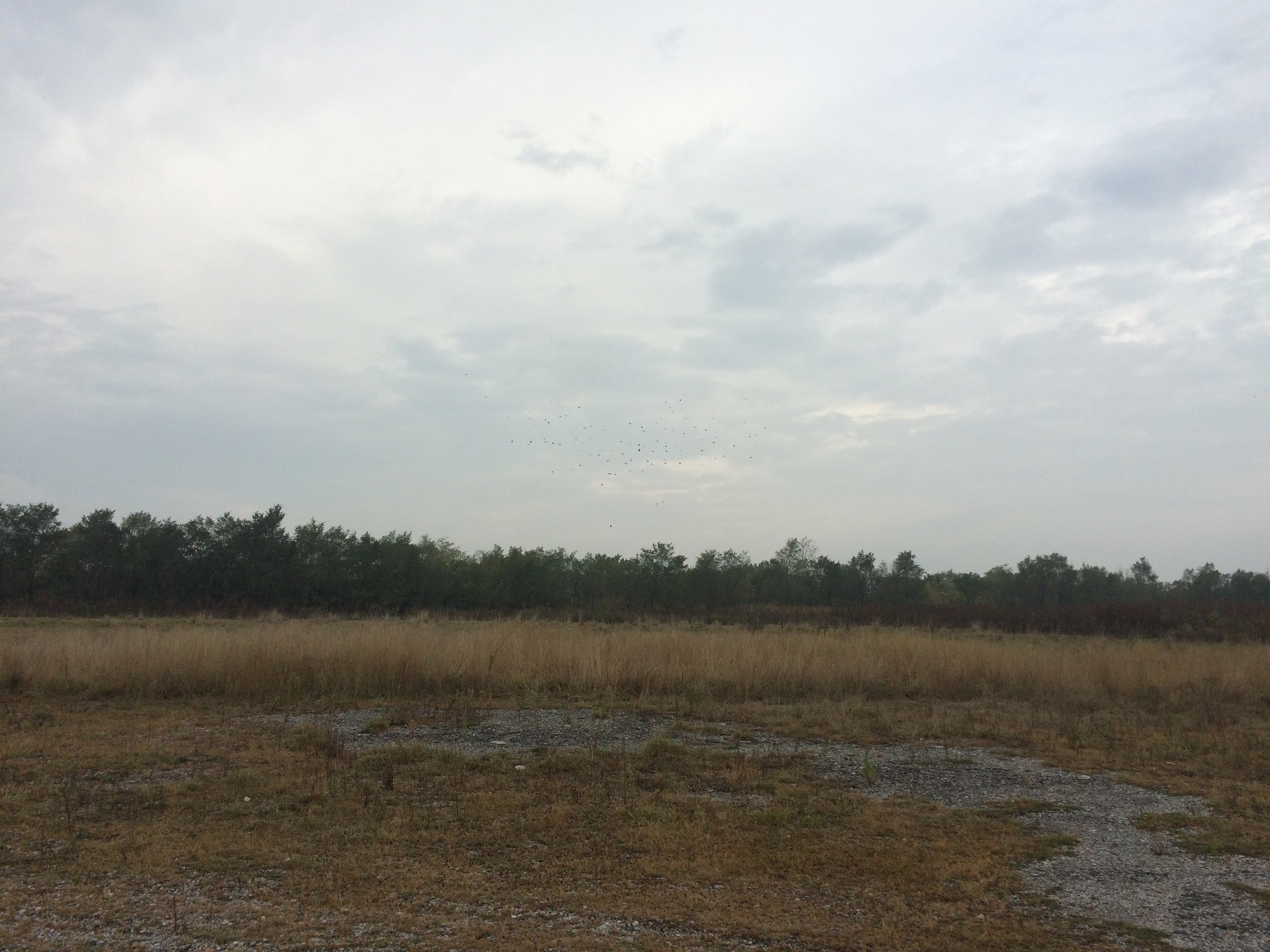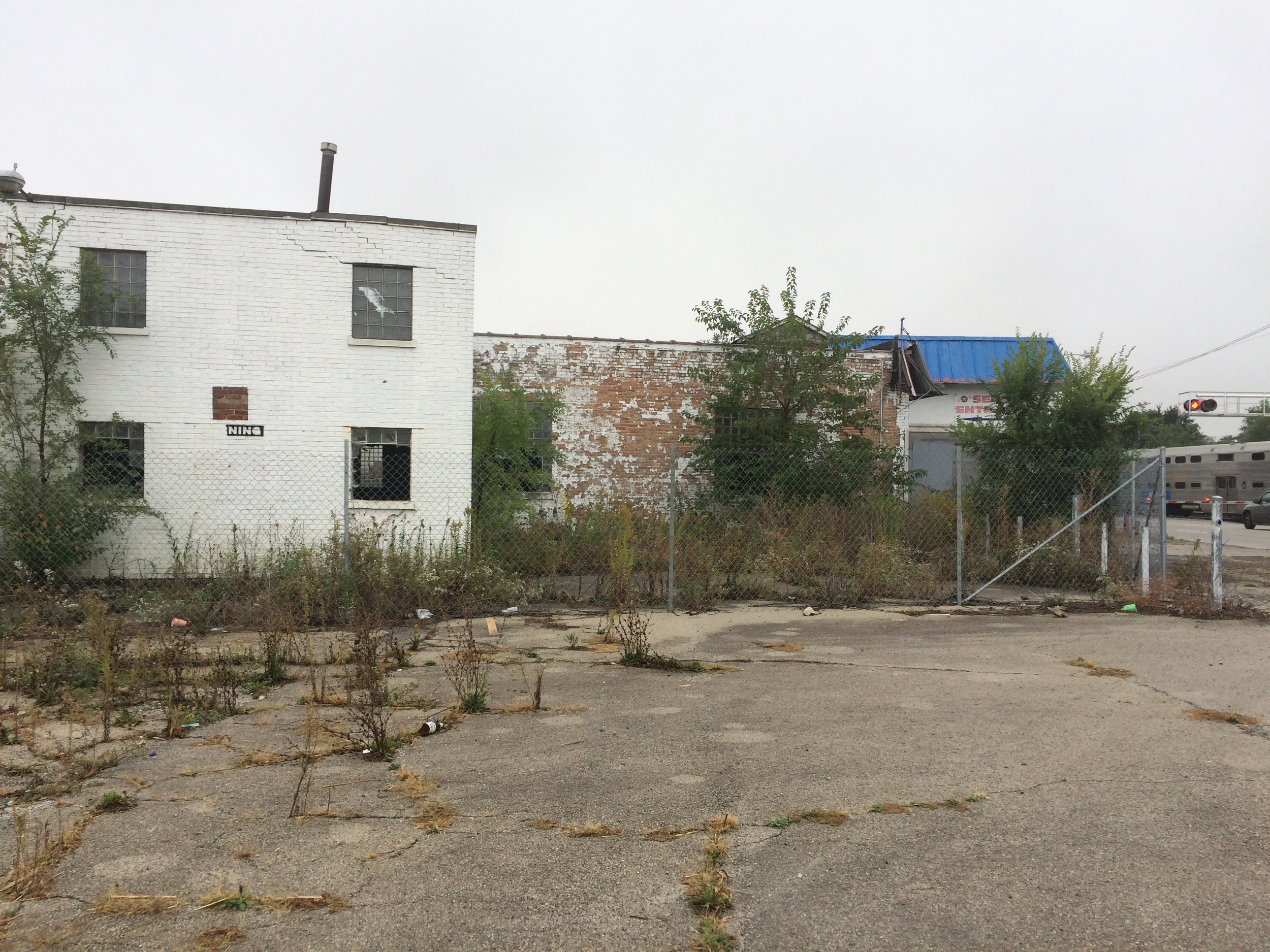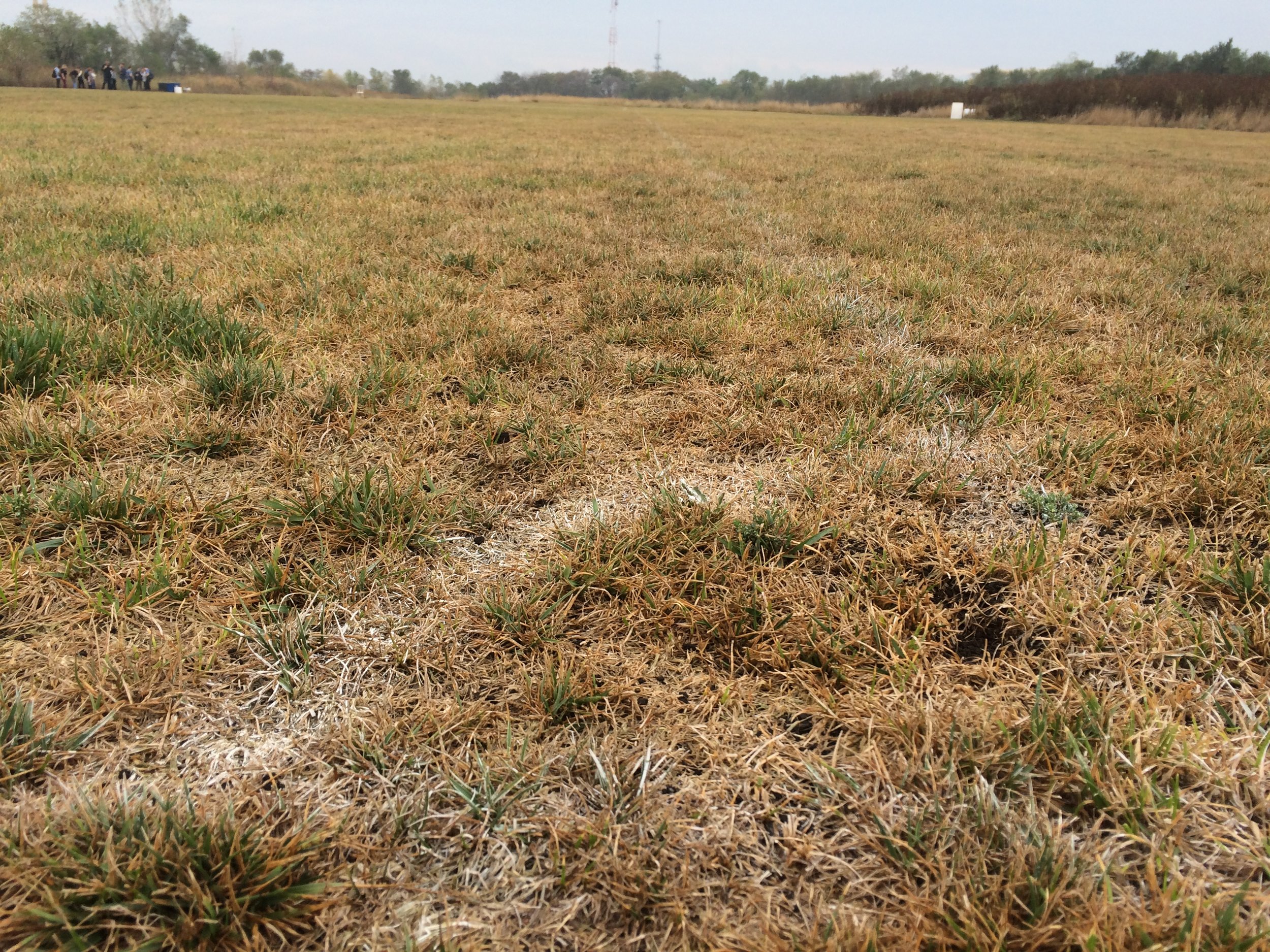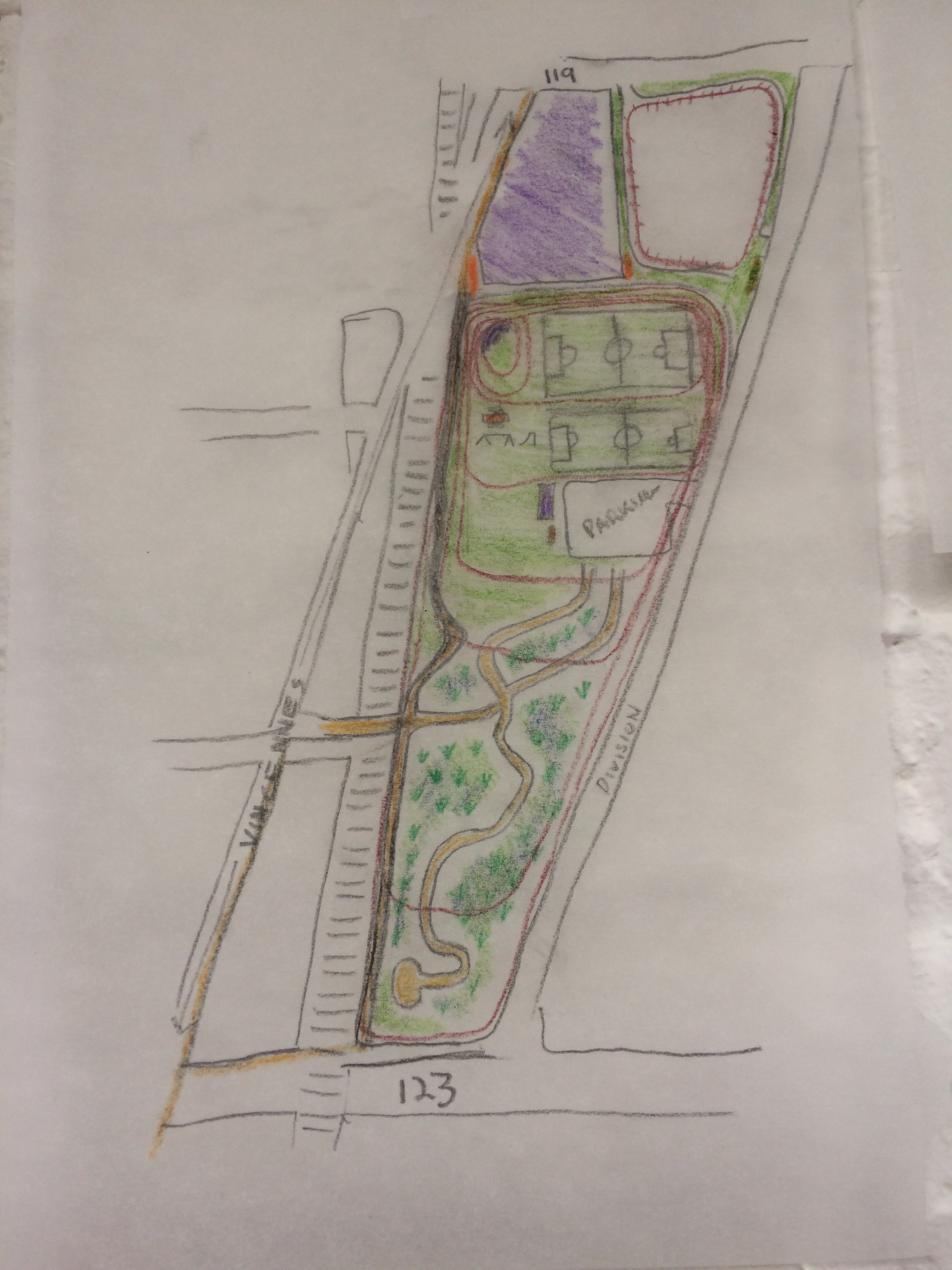Blue Island Workshop: Oct 6-7
Earlier this month, I joined a group of 20-or-so students from Columbia (NY), UIC and the Illinois Institute of Technology on a two-day workshop in Blue Island, IL. The idea was to look at green infrastructure on a former landfill site on 119th Street.
Much of the prep work was rather speculative. The site was on a Metra line, and the professors expressed an interest in transit-oriented development. Meanwhile, there was continuous flooding a couple of blocks away – the city of Blue Island teamed up with the Center for Neighborhood Technology to put in bioswales to help mitigate some of the flooding.
The alderman we met with said that the bioswales were loathed by the locals and that sewer cleaning was both cheaper and more effective at dealing with flooding. Also, the money to maintain these bioswales was running out. Blue Island was going to turn over the maintenance of the swales to the people who didn’t want them to begin with.
The first image shows an anti-swale sign, stating "Blue Island needs better government, not higher water rates. The second image shows a bioswale on the left corner. Images via writer.
This was the trend of the two-day workshop: some planning tool would be introduced as a way to deal with various scenarios, then the local electeds would tell us why those tools were not likely to work. We were not scheduled to meet with any folks from the community, but we were told to note that the top of the selected site was leveled into a soccer pitch that the community would want to keep. And why wouldn’t they? The folks who wanted to play soccer were the only ones to use and care for the site, which was stuck between an intermodal gravel road and a rail line.
Images of the site as of October 2017. Via writer.
The tension in the workshop wasn’t concerning the tension of the site itself, it was caused by fulfilling the needs of the community and the demands of the professors. The academic focus was sustainable development, but the alderman said there was no money for that. He said there should be a greater focus on economic growth, on getting the nearby community up from underwater.
Our group, split between UIC and Columbia students, decided to focus on a workforce development program. Looking at recent comprehensive plans that expressed a desire for greater vocational training as well as senior activities, we envisioned a community center connected to a park.
The site plan proposed. Drawn by writer.
The greenspace was split into two: a soccer center and a marshy prairiescape with trails. We created a tiered landscape so that rainwater would rush through the soccer center into the marsh. Irrigation water could be pumped up into the soccer fields as necessary. There is also a bike trail connecting to downtowns in Blue Island and Morgan Park along Vincennes Road.
Our hope for the community center was that it could become the center of gravity for new development. Classes focused on seniors and young working people would create enough traffic to allow businesses to succeed — and collaborations with the local community college and hospital would ideally provide avenues for workforce improvement focused on two major employment sectors: landscaping and healthcare.
We would also ideally include a business incubator. With bus and rail nearby, ideally the community center can become the hub of new housing development. In a perfect world, people would move from the flood-prone homes across Vincennes into new units, alleviating the social issue of flooded basements while allowing people to remain in place (and dry).
It was an interesting exercise, if frustrating at times due to vagueness. Some of the other groups focused more on finance, looking at state or federal funding resources for solar farms or the like. We were happy with our little proposal — if a bit anxious to get to the nuts and bolts of what one of these would really mean.

